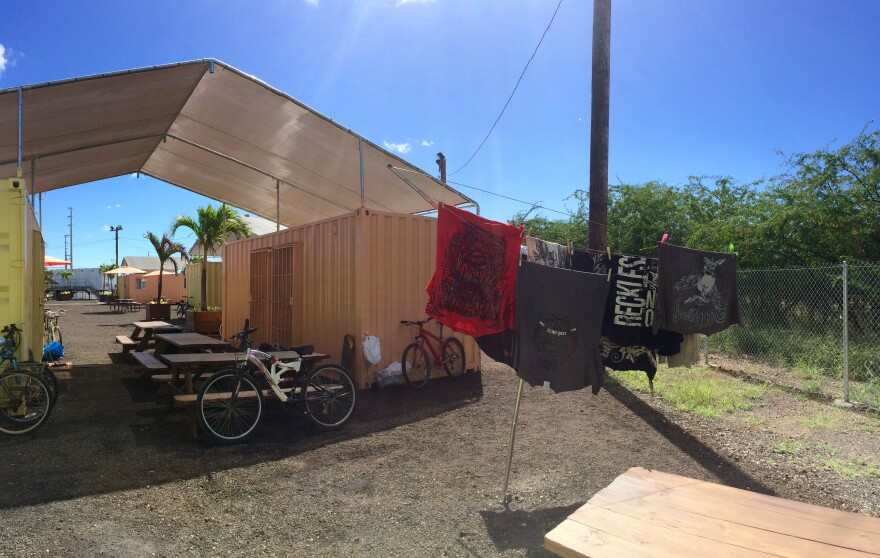A new homeless shelter in Honolulu is banking on the idea that fewer rules could lead to more people off the streets. The Sand Island facility, called Hale Mauliola, has been in business for three months now. HPR’s Molly Solomon paid a visit to see how things are going.
Patricia Thomas welcomes me into her home, a bright blue shipping container at Sand Island’s Hale Mauliola navigation center. "This is for a couple, two beds," she said. "They supply the furnishings, you're not sleeping on the ground."

Thomas shares the space with her boyfriend, one of 12 double containers available for couples. Alongside the beds, which are pushed together to save space, there’s an area to hang clothes and a bedside table, where Thomas keeps her makeup and toiletries. "You're secure, you have a gate behind you," said Thomas, who most recently lost her Makiki apartment to a fire on Christmas day. "They provide a good start."

The place doesn’t feel like a shelter. Eventually it will have room for 87 people at a time. And the hope is to get them into more permanent housing in at least 60 days. "It's a place of respite," said Kimo Carvalho, the director of community relations at the Institute for Human Services, a service provider contracted by the city to manage the facility. "The clients that come to Hale Mauliola, they are what we consider housing ready," explains Carvalho as he gives me a tour of the property. "They are coming here to become stable, access benefits, get employment, and just be safe until their unit opens up. Then they can actually go straight into housing."
Carvalho says one of the big differences at the Sand Island site: fewer rules. "There's no curfew, registered visitors are allowed on site, couples can live together, and anyone can have pets," he said. That’s huge for people like Clay Gohier, a former Waik?k? beach boy who’s been homeless for the past 10 years. "It's been a slice of heaven being here. It's like being reborn," said Gohier, while eating a plate lunch at the communal picnic tables. He had just returned from a trip into town on the free shuttle service provided by IHS. "When you're coming from nothing, not having anything like that, and you have something like this, a roof over your head. For a person like myself, I love it."

The program has already gotten four people into housing. Scott Morishige, the Governor’s coordinator on homelessness, hopes to see that number increase as more people move in later this month. "I think it's part of a larger overall strategy to reduce barriers to entering homeless shelters throughout the state," said Morishige. "And trying to really focus on putting people into permanent housing as quickly as possible."
A challenge that remains: finding enough permanent housing that’s also affordable.





